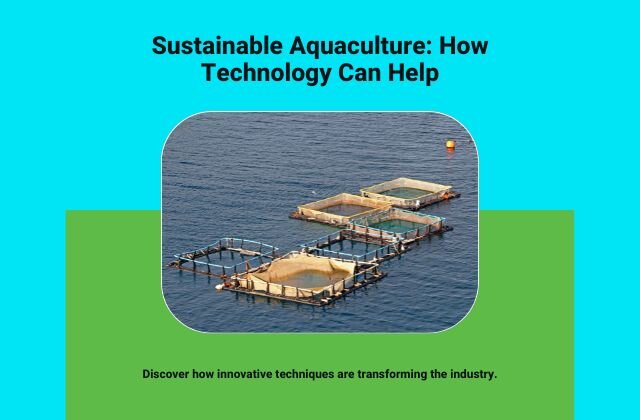
The Role of Technology in Sustainable Aquaculture
Introduction
In the quest for sustainability within the aquaculture industry, technology emerges as a beacon of hope, offering innovative solutions to some of the most pressing challenges faced by fish farmers worldwide. As the global population continues to rise, so does the demand for seafood. Sustainable aquaculture presents a viable solution to meet this demand while minimizing environmental impact. This blog post explores how technology is revolutionizing sustainable aquaculture, ensuring the industry's growth is both environmentally responsible and economically viable.
Precision Aquaculture: A Game-Changer
At the heart of sustainable aquaculture lies precision aquaculture, a technology-driven approach that optimizes production efficiency and reduces environmental footprint. Through the use of sensors, drones, and AI, farmers can monitor water quality, temperature, and fish health in real time. This data-driven approach enables precise feeding, reducing waste, and preventing overfeeding, which is crucial for maintaining water quality and fish health.
AI and Machine Learning: Predictive Analytics
Artificial intelligence (AI) and machine learning are transforming aquaculture by providing predictive insights that help prevent disease outbreaks. By analyzing vast amounts of data, these technologies can predict potential health issues before they become problematic, allowing for proactive management. This not only ensures the well-being of the aquatic life but also significantly reduces the use of antibiotics, contributing to the overall sustainability of the practice.
Robotics and Automation: Efficiency at Scale
Robotics and automation play a pivotal role in enhancing operational efficiency and reducing labor costs. Automated feeding systems, underwater robots for inspection and maintenance, and automated sorting and processing equipment are just a few examples of how robotics are being employed. These technologies not only improve efficiency but also reduce human error, ensuring consistent product quality.
IoT and Connectivity: Real-Time Management
The Internet of Things (IoT) connects various devices and systems, enabling seamless communication and real-time management of aquaculture operations. IoT devices can monitor environmental conditions, track fish movement, and manage feeding schedules, all in real-time. This level of connectivity ensures optimal conditions for fish growth and health, leading to higher yields and reduced environmental impact.
The Path Forward
As the aquaculture industry continues to evolve, the integration of technology will play a crucial role in ensuring its sustainability. Innovations in precision aquaculture, AI, robotics, and IoT are making aquaculture more efficient and environmentally friendly. By embracing these technologies, the industry can meet the growing demand for seafood while preserving our planet's precious marine ecosystems.
In conclusion, technology is the key to unlocking the full potential of sustainable aquaculture. Through innovation and the adoption of new technologies, the industry can achieve a balance between meeting global seafood demand and maintaining ecological integrity. The future of aquaculture is bright, and technology will undoubtedly lead the way in shaping a sustainable and prosperous industry.

